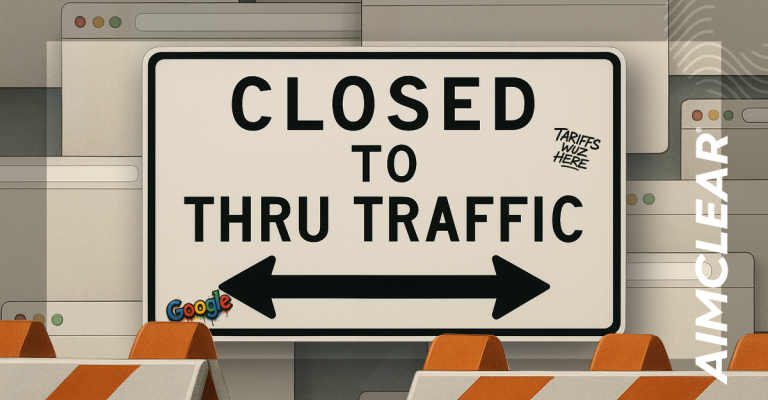We all know that friend, colleague or spouse who never grasped the concept of The Onion. They’d post a Facebook diatribe, lamenting some injustice or perceived stupidity they just read about in “the news.” However, the joke was on them because they fell for a parody ” a harmless, funny story on a famed humor site. After a brief chuckle about such an egregious social misstep, many of us would secretly breathe a sigh of relief, because we didn’t make the same preventable faux pas in our social media circles.
As recent as a year or two ago, separating parody from real news was still pretty easy. Sure, even the smartest of real news junkies could slip up and click the headline bait once or twice, but c’mon… aside from rare instances, fiction was pretty obvious. Fast forward to today and it seems a hell of a lot muddier.
Check this fairly rudimentary app “Factitious.” The game-like app gained fame recently via the venerable news team at National Public Radio. NPR journalists are those tried-and-true news hawks known for crafting detailed, fact-riddled real news, shared with very calm, soothing voices. They jumped at the chance to report on Factitious, because it underscored a veritable epidemic of fake news mixing with mainstream, trustworthy news.
Factitious challenges users to wade through outrageous headlines and stories before asking whether the news item is real or fake. As a grizzled old former journalist, I figured it would be a piece of cake to tell the difference between real and fake. After all, journalists all have that “nose for news” and wear it with pride.
Cue the “Price is Right” loser music. Playing Factitious is deceptively challenging. The first five attempts choosing real versus fake was sobering. Seriously, Python Gets Stuck in Portland Woman’s Earlobe was REAL news?
Fake News SUCKS for PR and Content Pros
The term “fake news” became etched in our daily lexicon during the most recent street-brawl election cycle. To this day, cries of “fake news” echo by the minute via presidential tweets, bipartisan political shenanigans and defensive PR attempts to recast actual bad news as “fake.” The term is used to define anything in the news margins, from clickbait to trumped up facts to actual lies ” or simply news that a particular individual doesn’t like.
Whatever term used to describe fake vs real, perceived deception can exact a huge toll on audiences. Marketers then find it more difficult to share an effective, real message. Non-stop claims of lies and distortions can transform a trusting audience to bitter skeptics on short order.
Let’s look at three evolving attributes of audiences that underscore challenges for today’s marketers and PR pros: Skepticism of facts, skepticism of sources and an inability to adequately filter information.
- Skepticism of facts: The “fake news” phenomena hits audiences at every turn. Many smart consumers now consciously or subconsciously question everything. From survey data presented as news to supposedly scientific facts used to bolster an argument, truth may seem more elusive than ever.
- Skepticism of sources: Sites veiled as news sources crop up on the internet faster than the latest Kardashian controversy. Questionable outlets often hide behind credible sounding names with site designs giving the appearance of an army of “journalists” on staff. Gauging news site credibility at a glance can be risky.Simultaneously, the very basis of actual news stories can be skitchy, at best. Survey results are a great example. Surveys can be used to “prove 80 percent of consumers need Product X.” Such a compelling stat may well be based on one person asking five friends whether they need a specific product with four responding in the affirmative. Stats could also be based on a survey instrument designed to exact a specific bold claim.
- Inability to filter information: In this age, many people respond immediately and viscerally to news from a tweet or headline without digging deeper. When the gut response happens, the responder likely has not applied any filter to the questionable news of the moment. Here are three examples of basic filters that could prevent the needless spread of fake news: Filter #1: Pause and ask “who is sharing this news and why?” Filter #2: Validate a story through multiple news sources, ideally of a recognizable merit and credibility. Filter #3: Analyze a reported source. An organization named “The National Institute for _______” may well be a pajama clad blogger, sneaky marketer or other person with a vested interest in their version of truth.
Marketing and PR: The Truth Shall Set You Free
The best antidote to fake news is good old fashioned REAL news. Put on a true journalist’s hat and think about positioning a product or service in the light of real news. Consider some core essentials of newsworthiness:
Interest: Simply introducing a product or service to the market isn’t newsworthy. Interest is created if a product or services solves a real need, resolves a conflict, eliminates a stressor, provides a truly new approach to a definable problem, or introduces a totally new, mind-blowing experience.
Every audience has needs or wants. A product or service that addresses specific needs in a meaningful ways may actually be news.
Truth: Real news is true. The closer a marketer or PR person can get to actual truth, the greater the value to respectable and responsible influencers, bloggers and journalists. Unfounded performance claims or shades of truth in product or service descriptions make a story vulnerable to attack or viable claims of being fake.
Be honest. For example, if a product only does A and B, but not C, then be specific about A and B. Perhaps C is an enhancement for the next product iteration.
Credibility: Again, much like a journalist’s thought process, people crave additional information sources. The more an organization can package product marketing with meaningful outside validation, the more likely target audiences will view the story as real.
Sample Toolkit to Close the Credibility Gap
A marketing and PR program’s success will be based, in large part, on the credibility of information being shared. Unassailable content allows a campaign to fly above the flack of doubt and deliver strong, compelling, actionable information to the right audiences.
Organizations can establish credibility in many ways, but the following concepts can provide a general roadmap to do so, whether in B2B or B2C context. The more tools applied appropriately through relevant channels, the better the chances of news being viewed as credible. Keep all audiences in mind, including influencers, bloggers, journalists and the end user consumer or business prospect who has purchasing authority.
The tried and true press release. From a PR standpoint, the release is often a cornerstone of product launches and updates, financial news, company updates and other actions designed to capture media and influencer attention. In terms of credibility, the release still has great value, because the primary intended targets ” journalists and bloggers ” are often the biggest skeptics around. Most despise being used as pawns for a blatant marketing campaign and true journalists often have a more purist view of stories that merit coverage.
Facts, compelling use cases, actual news, clear news-oriented writing and most of all, an absence of hype, are essential in clearing this hurdle of credibility.
Customer stories or case studies. Proof of concept is best shown via real world application of a product or service. In the enterprise software universe, for example, beta customers are often an important proving ground for the R&D team, but also provide exceptional validation for journalists, editors, bloggers and customers. The more detailed the story, the better.
Some B2B companies work language into customer contracts, particularly beta customers, to require participation in PR and marketing initiatives, such as case studies. Pre-launch pilot customers, early adopters and customers who had a unique/great experience with a product make a product story much more real.
Third-party validation. Big businesses and jumbo software providers look to powerhouse experts like Gartner, Forrester and Constellation Research to review and write about new innovations, business products or services. A credible industry analyst can be pivotal in validating product hype. By linking marketing campaigns with solid industry analyst relations and PR initiatives, organizations can establish immediate credibility and construct a more bulletproof story for all stakeholders.
The same holds true, in many instances, for startups or providers looking to enter new geographies. Third party validation can be worth its weight in gold.
In the B2C universe, third party validation may well come from a popular YouTuber who pontificates on particular products or topics. Whether selling cameras, cars, musical instruments, water filtration systems, farm equipment or anything imaginable, influencers abound, eager to demonstrate their own credibility.
Blogs, white papers and academic validation. Depending on industry or product type, the notion of insightful thought leadership or peer reviewed validation is sometimes essential. For example, a company selling new surgical or medical diagnostic equipment will be required to communicate beyond its audience’s expectations. Detailed, academic validation of highly technical topics or products is absolutely essential.
While perhaps less intensive, a company selling a cool new home automation tool, a gizmo that interacts with a mobile device, or even those selling financial services can benefit from meaningful thought leadership through blogs, white papers and other resources. Every business needs street cred.
Oh… best yet… the credibility builders above can work magic as amazing, rich content for coordinated paid and organic social campaigns.
It is also critical that marketing, PR, the social team, investor relations and other disciplines work together to tell a cohesive story. Invest a few minutes rereading our earlier post Integrating Digital Marketing & Public Relations: Who Says Cats & Dogs Can’t Get Along? to see the importance of interdisciplinary cooperation.
Fake News is Really Nothing New
Nearly 65 years ago, author and journalist Darrell Huff penned a classic college textbook “How to Lie with Statistics” (W. W. Norton & Company). The book became a standard for college students in the 1960s, 70s and into the 80s, shedding light ways to bolster claims and tell stories through data and statistical manipulation.
At no point did Huff advocate outright falsifying information. He cleverly illustrated the simplicity of distorting reality through graphical and selective presentation of data. While penning “How to Lie with Statistics,” it’s doubtful Huff could have envisioned the incessant information flow of 2017. However, Huff sharpened critical thinking for millions of people and created healthy, smart skepticism, which now seems in short supply. A stats prof at some some college or university may want to dust off Huff’s Eisenhower-era arguments to shape a new generation of skeptics in today’s fake news era.
Let’s face it, most companies are probably safe from viral accusations of “fake news” as currently happening to one venerable cable news network courtesy of the Tweeter-in-Chief. But with more channels and a higher information flow than ever, credibility killers will plague most marketers and PR pros throughout their careers. Those who build meaningful credibility when marketing products or services will stand a better chance at maintaining believable and real stories about their products and services for the long haul.









